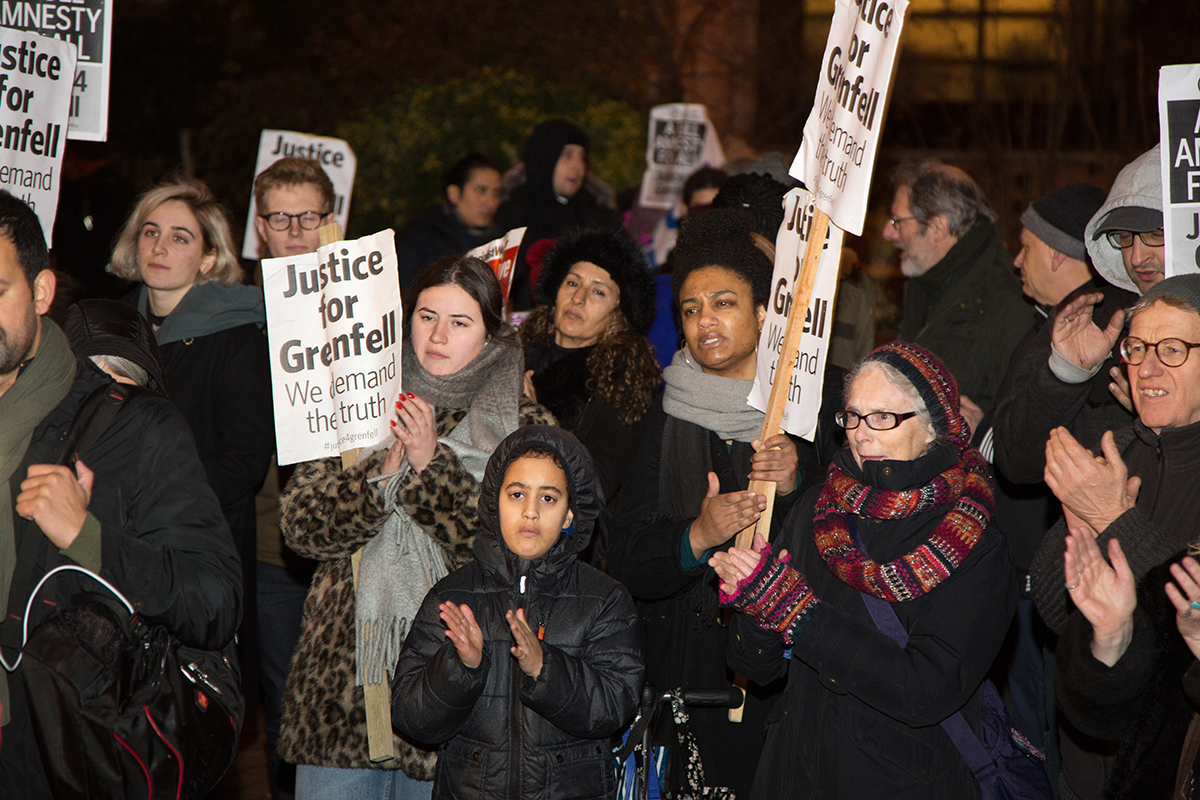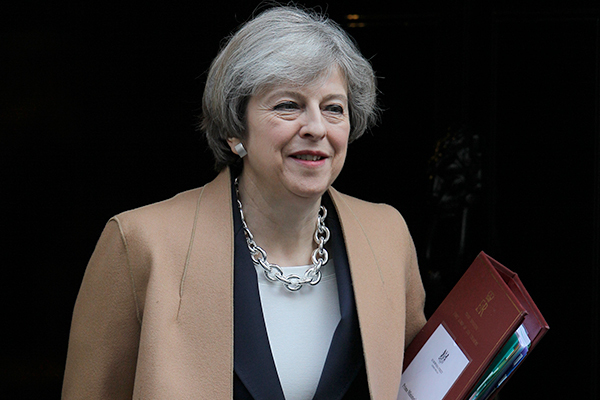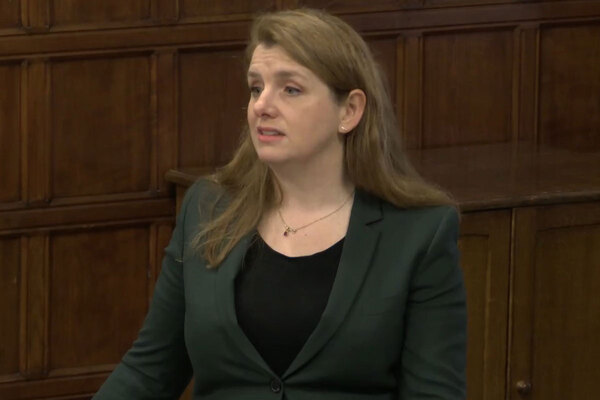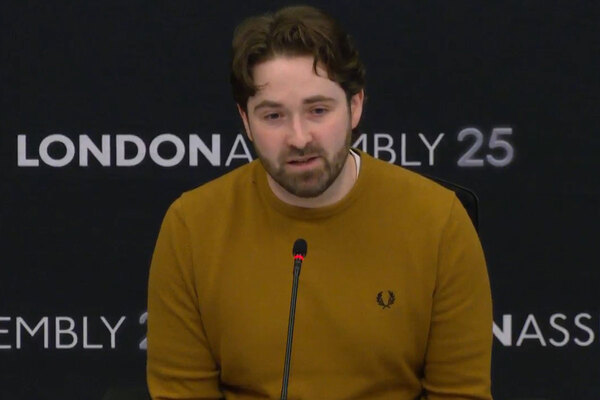You are viewing 1 of your 1 free articles
 Jules Birch
Jules BirchMay’s council housing revolution may not be what it seems
Despite rhetoric about a return to council housing this year, the evidence suggests this government still sees housing in terms of homeownership, says Jules Birch
Is a year that has seen a huge shift in the politics of housing ending with a return to business as usual?
The Grenfell fire is the obvious reason for the change in the terms of the housing debate but it is not the only one.
The prime minister’s party conference speech will be remembered for the prankster, the lost voice and the collapsing stage set – but it did seem to mark the culmination of a shift from Help to Buy to help for all tenures.
But just as her country is not quite working for everyone, so her social housing revolution may not be quite what it seems.
One clue, I think, lies in the way that parliamentary debate has returned to the bad old days of Eric Pickles and Grant Shapps in terms of the selective use of statistics.
The first time I noticed this was at last week’s Communities and Local Government questions.
Alok Sharma seems a nice chap and has quietly impressed with his willingness to listen to tenants at consultations ahead of the Social Housing Green Paper.
But asked about homes built for social rent last week, he boasted that “since 2010, nearly 128,000 homes for social rent have been built in England, and 118,000 have been built for affordable rent”.
That’s an answer that does not quite compute at first, but check the statistics and he is perfectly correct – and totally misleading – at the same time.
“The Conservative-led coalition inherited an affordable housing programme from Labour that included substantial investment in social rent.”
The only reason he is correct is that the Conservative-led coalition inherited an affordable housing programme from Labour that included substantial investment in social rent.
That delivered 40,000 social rent homes in 2010/11, 38,000 in 2011/12 and 18,000 in 2012/13.
In the meantime, as the minister well knows, Messrs Osborne, Pickles and Shapps cut the budget by two-thirds and diverted the money into affordable rent.
The result is that just 5,000 additional social rent homes were provided in 2016/17.
Theresa May herself was playing the same game at the penultimate Prime Minister’s Questions of the year.
There was ample opportunity as Jeremy Corbyn devoted all of his questions to housing but the prime minister responded with evasions and half answers featuring statistics that were as misleading as they were correct.
His central attack was on the 50% rise in homelessness and doubling in rough sleeping seen since 2010.
Could she pledge that 2018 would be the year when homelessness starts to go down again?
Ms May boasted about funding and the Homelessness Reduction Act and attacked Labour’s record: “When housebuilding went down by 45%, the number of homes bought and sold went down by 40% and social housing went down by 400,000.”
The first two are true if you blame Labour for the financial crisis and the third is correct but ignores the even steeper decline in social housing under the Conservatives before 1997 and after 2010.
Mr Corbyn hit back with the 128,000 children in the UK in temporary accommodation at Christmas – would Christmas 2018 see fewer children without a home to call their own?
“Of course we want every child to wake up in their own home, particularly at Christmas,” said Ms May. That’s why the government had allowed councils to place families in a broader range of accommodation including the private rented sector, why it had changed the law so that families with children do not find themselves in B&Bs except in an emergency, and why it had supported the Homelessness Reduction Act.
“I have been clear [the tell-tale sign that she isn’t being clear at all], as I was a few weeks ago, that we are going to be a government [that puts] a clear focus on housing, on building the homes that people need, on ensuring that people are given help to get into those homes, and on acting to prevent homelessness before it happens.”
The truth was only too clear in homelessness statistics published the following day: 79,000 families and 121,000 children were in temporary accommodation in England at the end of September, up around 6% on last year and more than 50% since 2010.
Meanwhile 2,660 families with children were in B&Bs including 1,110 who had been resident for more than the six-week legal limit. Both figures are down on last year but the comparable figures when the Conservatives came to power in 2010 were 740 and 160.
On private renter insecurity, Mr Corbyn asked when Ms May would “back secure three-year tenancies” and the prime minister saying she would “encourage” them and saying (wrongly) that Labour backs rent control.
On the Right to Buy, Ms May blustered over the depressing evidence about one-for-one non-replacement, with a weak claim that “we are increasing the flexibilities to enable councils to build homes”.
And she claimed that John Healey’s statement in the depths of the financial crisis that fewer people owning their home is “not such a bad thing” was evidence that Labour does not support homeownership.
This was straight from the Osborne playbook and skips over the 200,000 fall in owner-occupation under the Conservatives.
“You don’t have to scratch very far beneath the veneer to find Osborne-style political calculation about homeownership at all costs.”
But for me it also highlights the fact that despite all the rhetoric about social housing (including May’s ‘extra’ £2bn reallocated from other programmes) and despite the apparent retreats on Starter Homes the council sales levy, this government still sees housing mainly in terms of ownership.
The extra £10bn for Help to Buy and £3bn cut in stamp duty are headline evidence of that, but look too at a report by Conservative MP Chris Philp for the Centre for Policy Studies this week.
The title – Homes for Everyone – echoes Ms May’s “country that works for everyone” but it’s pretty clear that what he means is everyone who can afford to buy.
He calls for eye-catching restrictions on foreign buyers and some interesting ones on compulsory purchase, plus more chances for renters to buy.
However, things would go backwards on affordable housing: he proposes removing Section 106 obligations on developers of sites up to 100 homes (10 times the current threshold).
That’s evidence, I think, that you don’t have to scratch very far beneath the veneer of Conservative tenure-neutral rhetoric to find Osborne-style political calculation about homeownership at all costs.
Finally, on supply Ms May boasted: “We are building more homes – last year, 217,000 homes were built in this country [England]. Apart from one year, that is a record for the last 30 years.”
This is one area where the Conservatives have a pretty solid recent record but she is unable to resist gilding it.
The fact that the total is the highest since 2007/08’s 224,000 is a significant achievement but that does not sound as good as the way she phrased it.
The stats go back 25 years, not 30 as she claims, and she is also talking about net housing supply, not just new homes.
The total has been inflated recently by an increase in homes created via change of use (mainly office to residential) and by a fall in demolitions.
New build completions have also increased significantly to 184,000 but “third highest in the past 11 years” does not quite have the same ring to it.
When the chef has to over-egg even their most palatable pudding, the signs are not great for the rest of the menu.
Jules Birch, award-winning blogger
Related stories











